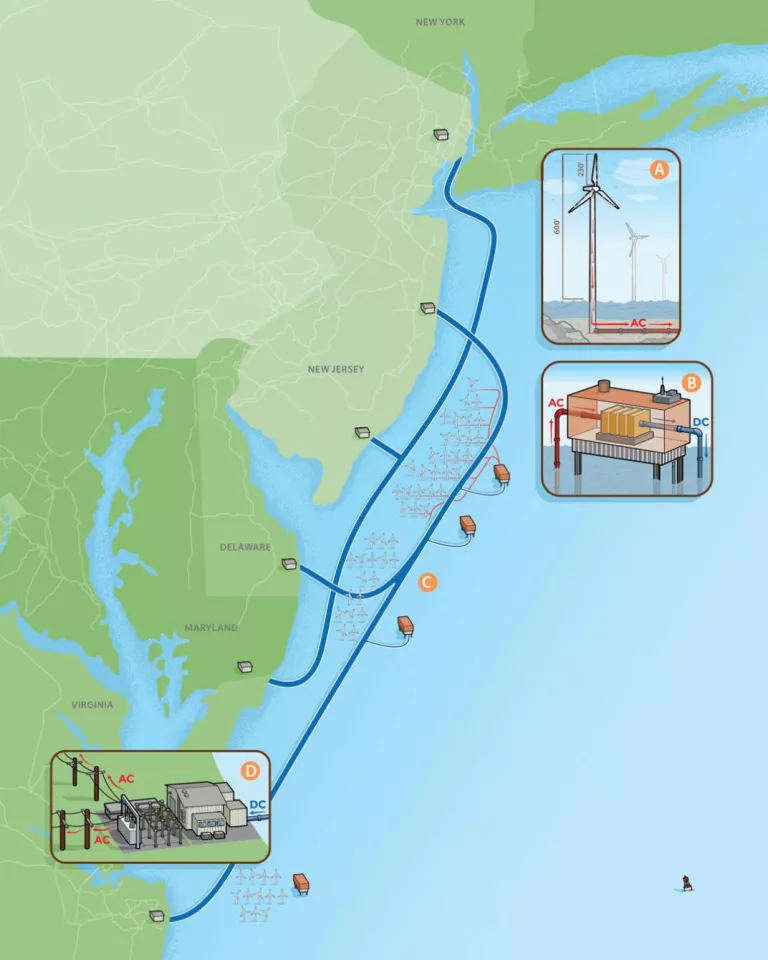Wind Power Can Save the Grid
Conventional thinking holds that wind power's variability (the wind doesn't blow all the time) might destabilize the electric grid. An ambitious project called the Atlantic Wind Connection promises just the opposite. Clustered wind farms off the Atlantic seaboard from New Jersey to Virginia would be linked by 350 miles of undersea cables, enabling power to be sent up or down the coast as needed. This would relieve congestion on the terrestrial grid, improving its reliability. The proposal's advocates are still trying to sell politicians on the project, but it's already won the financial backing of Google.

A: Most wind farms would stand 12 to 15 miles off the coast in federally designated wind areas, minimizing "visual pollution" and taking advantage of strong offshore winds--which average more than 17 miles per hour--and waters less than 100 feet deep. Today's biggest turbines generate up to 10 megawatts each, but the Atlantic Wind Connection could take advantage of next-generation, 12-megawatt turbines.
B: Offshore stations would convert the alternating current (AC) from the turbines into high-voltage direct current (HVDC). Although the "war of currents" in the late 19th century established AC as standard throughout the electric grid, HVDC has clear advantages for offshore wind, allowing large amounts of power to be sent long distances with low transmission losses.
C: The offshore converter stations would send power along one of two cables buried beneath the seafloor. Thus embedded, the cables would be sheltered from the stormy weather and solar flares that bedevil terrestrial transmission. The cables would be capable of transmitting 1,000 MW, enough to power a quarter million homes.
D: The cables would connect to land at six locations along the coast, where power would be converted back into AC and sent to the terrestrial grid (light lines on map). But power could also be sent in the other direction, from land to offshore, providing a new path for electricity to flow to power-hungry New Jersey and New York. This would increase grid reliability up and down the East Coast, where a third of the nation's electricity is consumed.
 The Magazine of The Sierra Club
The Magazine of The Sierra Club



